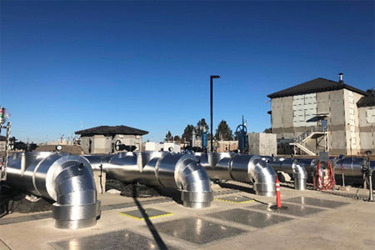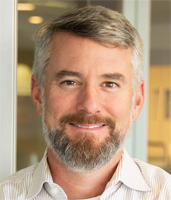The Contractor's Song: Hallelujah, It's A Lift Station!
By Jeremy Holland

“It goes like this, the fourth, the fifth / The minor fall, the major lift…” - Leonard Cohen
Lift stations collect and transport our waste for treatment so that lakes, rivers, and streams can remain clean and safe. But in the immortal words of Leonard Cohen, we don’t talk about “what’s really going on below” in order to understand how important this infrastructure is to the continued function of our society. It’s time to reveal our buried infrastructure and appreciate what goes in to building lift stations for long-term safe and efficient operations.
Old Or New?
When we are looking at building a lift station project, the first question that comes to mind is whether the project is to construct a new station or to expand, modify, or replace an existing station. The construction activities associated with these two types of projects have some similarities but some significant differences. The main obstacle with an existing station is the need to continue operations while it is under construction. Many years ago, I constructed modifications of a lift station that was being converted from a dry pit station, where the pumps are accessible inside the station, to a submersible station, where the pumps are located directly in the wet well. The entire station needed to be bypassed in order to demolish walls, isolate a new, larger wet well from the remaining electrical equipment, and provide the structures needed to access the submersible pumps. The attention necessary to develop a bypass pumping system that could not fail was extensive and had multiple backup measures to avoid any failures that would cause a major overflow event.
What Comes In, Must Go Out
Wastewater never stops flowing and as a result, lift stations must always work. Cohen unintentionally nailed the design intent in his song because a lift station should be configured with a “minor fall” and a “major lift.” Limiting the fall of wastewater into a wet well avoids turbulence, which can generate a lot of odors, and it also limits air entrainment, which can affect pump performance. While the lift doesn’t always have to have to be “major,” it is always necessary for a station to provide the pump energy to move wastewater on to its next or final destination. The ability for the station to complete that goal is a key requirement. From a construction perspective, mindfulness that configuration and meeting the design intent to avoid a failure and provide the lift is always critical to meeting the performance requirement of a lift station.
It Does Hold Water
A lift station is ultimately a buried tank that holds wastewater. The environment of the wet well is also challenging because the water being stored has pollutants which can cause corrosion and hazardous air conditions. Nearly all lift stations are constructed with concrete, which must be watertight. The concrete must therefore be placed, consolidated and cured correctly to provide a waterproof structure. In addition, a liner or coating is always required in a wet well to limit the effects of corrosion. Inclusion of a liner in the concrete forms, or allowing for the coating after the concrete is placed, needs to be planned in advance. Accounting for the thickness of a liner or coating also need to be checked so that the system elevations work.
Will It Serve Now And The Future?
Lift stations are infrastructure with very long lives. Planning for the now and the future is always a difficult process. There is benefit in sizing a facility to accommodate future growth. The excavation and concrete work to build a station is only marginally increased by building a larger facility than is needed at the time, compared to the costs of expanding a facility or building a new one. The challenge can be sizing the infrastructure that is right-sized for handling wastewater flows that are small. While wastewater flows are continuous, if they are too small then solids in the water will settle out in pipes and a biological process will happen that generates hydrogen sulfide, a hazardous and corrosive gas. Recognizing this variance early will allow for inclusion of chemical systems that can limit the creation of hydrogen sulfide, or selection of materials that are not impacted by its generation.
Coda — Start-Up And Commissioning
After the station is built, its then time to start it up and turn over the keys to the owner. This final step is sometimes just as critical as how to design the project. Figuring out how to test the station to confirm performance before sending wastewater to it can sometimes be a challenge. We recently completed a lift station for the City of Bend, Oregon. The team worked closely with the engineers to develop an approach that would serve two purposes. First, the station could be tested in a closed loop to avoid any need to interact with the existing sewage system; and second, the station also was able to function as a bypass so that work could be completed at the treatment plant’s headworks. Working together during the design phase, the engineer and our construction team were able to identify these needs and an approach which saved the City many thousands of dollars in rental equipment costs. Hallelujah!
 Jeremy Holland is a Market Executive in the Water Infrastructure Market in Mortenson Seattle’s Operating Group. With 23 years of engineering experience, Jeremy has served as project principal, technical advisor, project manager, and design engineer. His industry knowledge spans a wide variety of projects, clients, disciplines, and engineering problems. A licensed Professional Engineer in Oregon, WA, and Puerto Rico, Jeremy received a Bachelor of Science in Chemical Engineering and a Bachelor of Arts in English from the University of Notre Dame, and a master’s degree in Business Administration from Portland State University. He is a board member of the Oregon Association of Clean Water Agencies and is the Co-Chair of the Water Quality Committee.
Jeremy Holland is a Market Executive in the Water Infrastructure Market in Mortenson Seattle’s Operating Group. With 23 years of engineering experience, Jeremy has served as project principal, technical advisor, project manager, and design engineer. His industry knowledge spans a wide variety of projects, clients, disciplines, and engineering problems. A licensed Professional Engineer in Oregon, WA, and Puerto Rico, Jeremy received a Bachelor of Science in Chemical Engineering and a Bachelor of Arts in English from the University of Notre Dame, and a master’s degree in Business Administration from Portland State University. He is a board member of the Oregon Association of Clean Water Agencies and is the Co-Chair of the Water Quality Committee.
